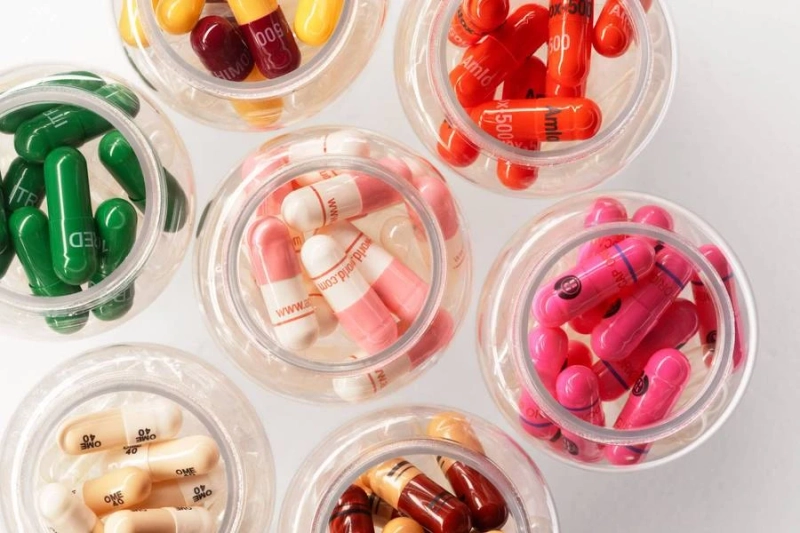Capsules are one of the most adaptable oral dosage formats in the pharmaceutical industry, capable of delivering powders, granules, semi-solids, and liquids with ease. Their formulation flexibility and ease of use make them indispensable in drug development. For decades, gelatin has been the dominant material used for capsule shells due to its favorable physical properties and compatibility with automated filling systems. Gelatin capsules dissolve quickly—usually within 5 to 10 minutes—in biological fluids, supporting rapid drug release and earning their place in numerous pharmaceutical formulations.
Drawbacks Associated with Gelatin Capsules
Despite these advantages, gelatin capsules are not universally ideal. Their inherent moisture content, typically between 13% and 16%, restricts their use with moisture-sensitive compounds, potentially affecting the long-term stability of such formulations. Gelatin also contains proteins and amino acids that may interact negatively with aldehyde-containing ingredients, leading to cross-linking and reduced capsule solubility. In addition, concerns about gelatin’s animal origin and associated disease risks such as TSE/BSE have fueled the search for safe, non-animal-based alternatives in capsule production.
The Emergence of HPMC as a Capsule Material
Hydroxypropyl methylcellulose (HPMC), a derivative of cellulose, has gained significant traction as a non-animal capsule shell material. Commonly used in tablet coatings and as an excipient, HPMC is safe, effective, and broadly accepted in pharmaceutical applications. Its plant-based origin aligns with current dietary and ethical trends, making it particularly attractive in markets demanding vegetarian or vegan-friendly products.
Moisture Content and Stability
Moisture is a major factor in the degradation of pharmaceutical products. HPMC capsules contain only 3% to 8% moisture, offering a distinct advantage over gelatin in preserving sensitive formulations. Their ability to retain elasticity and structural integrity under low or fluctuating humidity conditions ensures that HPMC capsules are well-suited for a broad range of storage and transportation environments, reducing formulation risk and improving product shelf life.
No Cross-Linking Reactions
A key benefit of HPMC capsules is their chemical stability. Gelatin capsules can undergo cross-linking when exposed to reactive aldehydes, altering disintegration behavior and impacting drug delivery. HPMC capsules, lacking proteins and amino groups, are not susceptible to such reactions. This makes them more stable over time and ensures consistent drug release across the product’s life cycle.
Superior Mechanical Characteristics
Robust mechanical performance is essential for capsule handling in high-throughput production lines. HPMC capsules possess excellent tensile strength and flexibility, making them ideal for automated filling and packaging. The elasticity of gelatin capsules decreases significantly under high humidity, whereas HPMC capsules maintain a more stable Young’s modulus, meaning they remain firm and intact in humid environments. This resilience ensures minimal production disruption and uniform product quality.
Manufacturing Advances: Thermogelation Technology
Traditional HPMC capsule production processes, adapted from gelatin technologies, involved the use of gelling agents and ionic components to support shell formation. These additions complicated the formulation and occasionally led to stability issues. Thermogelation has revolutionized HPMC capsule manufacturing by leveraging the polymer’s natural property of gelling at higher temperatures.
In the thermogelation process, hot pin bars are dipped into cool HPMC solution, initiating gel formation without the need for additives. This streamlined approach results in cleaner, more consistent capsules composed solely of HPMC and water. The outcome is a capsule with pH-independent dissolution behavior, matching or exceeding the performance of gelatin capsules across different media conditions.
Plant-Based Composition and Safety Benefits
Because HPMC is entirely plant-based, it is devoid of animal-origin safety risks such as BSE and TSE. This feature simplifies regulatory compliance and ensures consumer confidence. Additionally, it broadens product appeal to customers adhering to vegetarian, vegan, or culturally restricted diets, thereby increasing market reach.
Conclusion
HPMC capsules represent a forward-thinking alternative to traditional gelatin capsules. Their low moisture content, chemical inertness, superior mechanical stability, and innovative thermogelling manufacturing process make them ideal for contemporary pharmaceutical needs. As the industry continues to evolve towards cleaner, safer, and more globally acceptable drug delivery systems, HPMC capsules stand at the forefront of capsule innovation.


